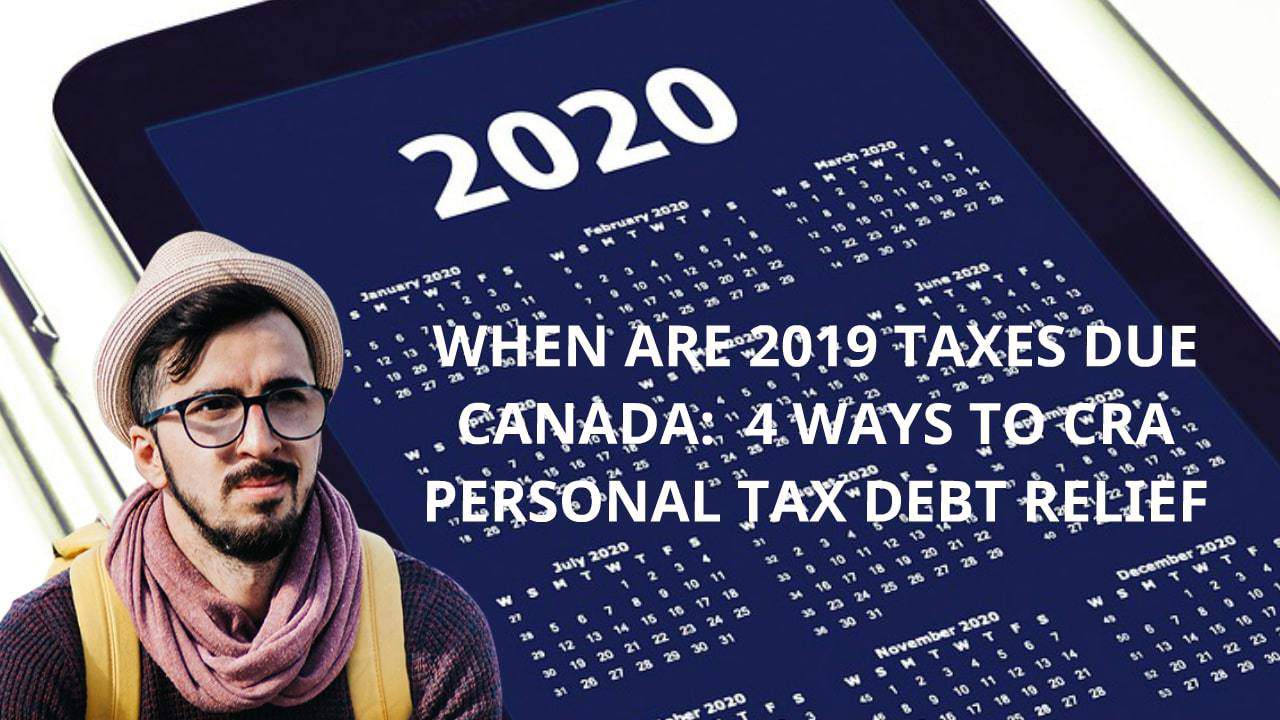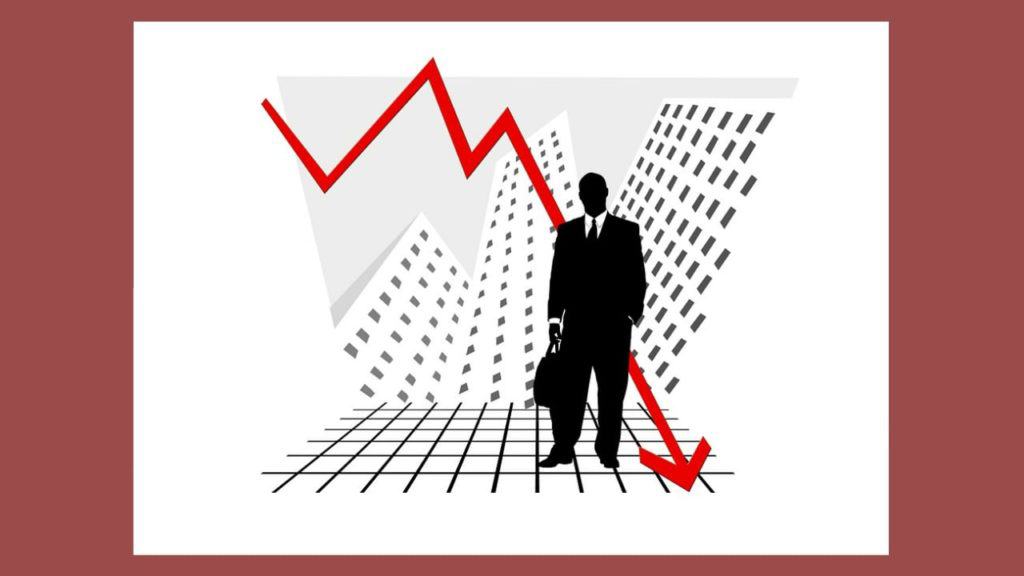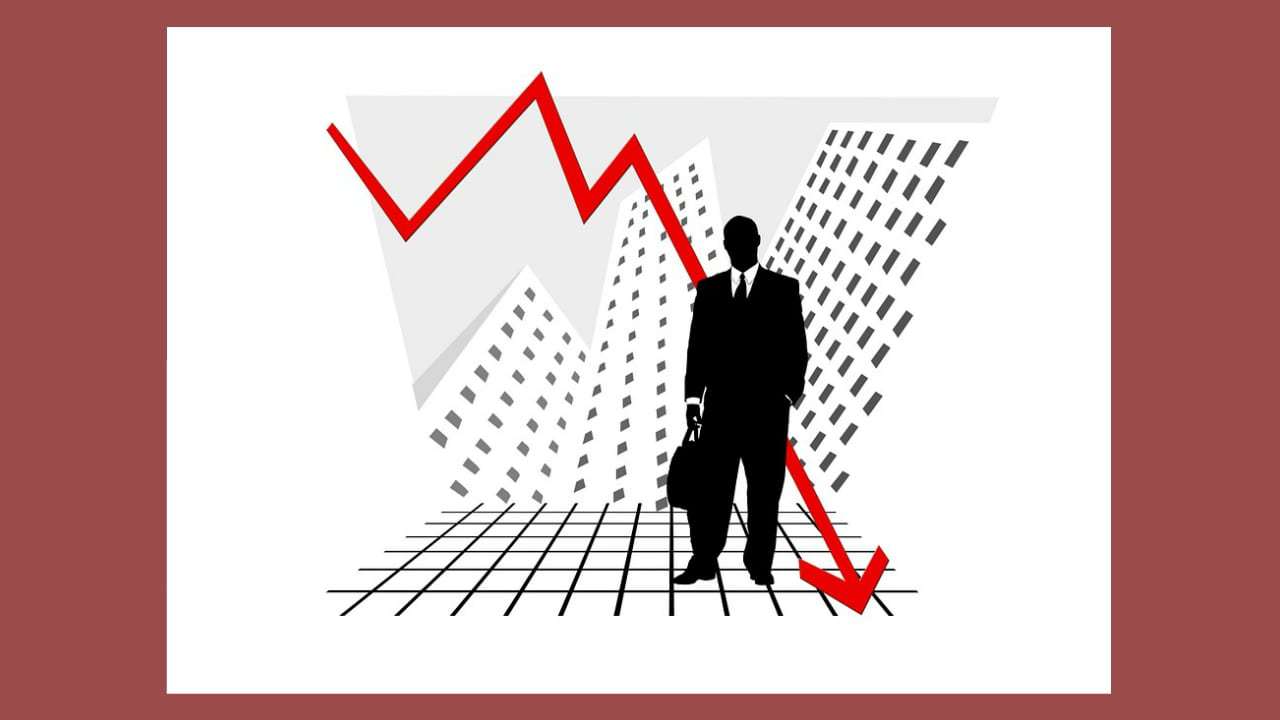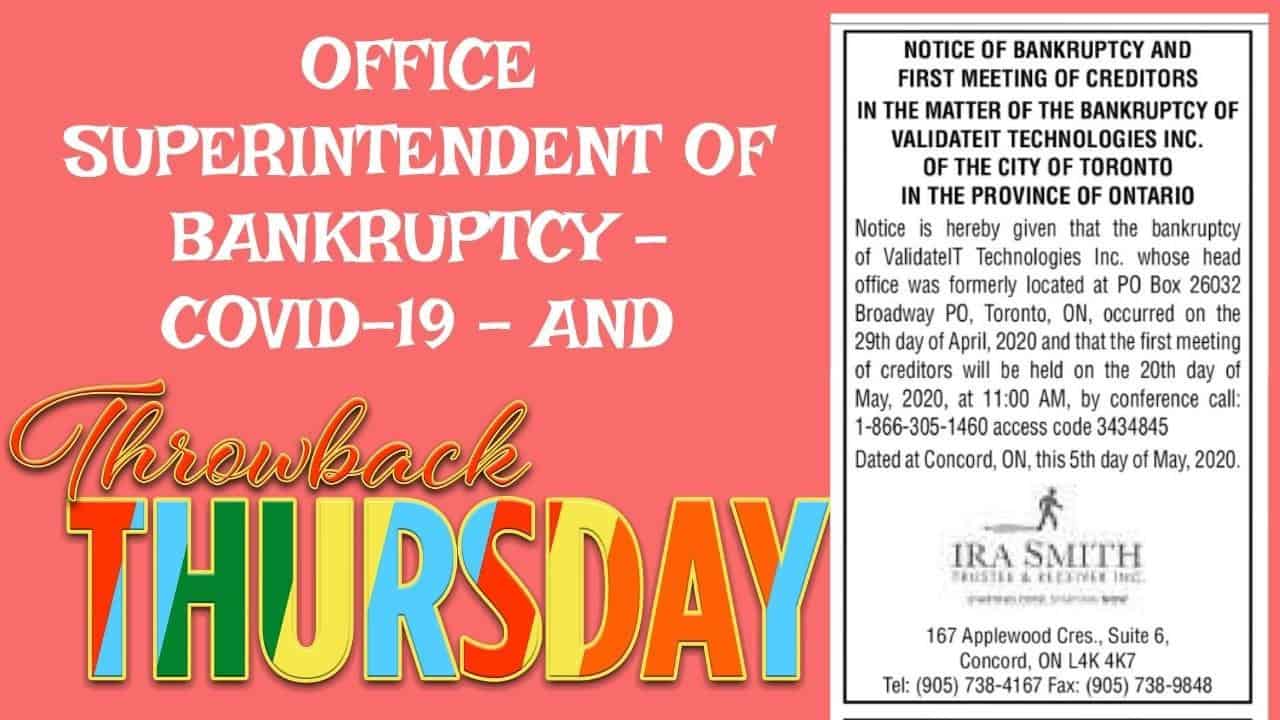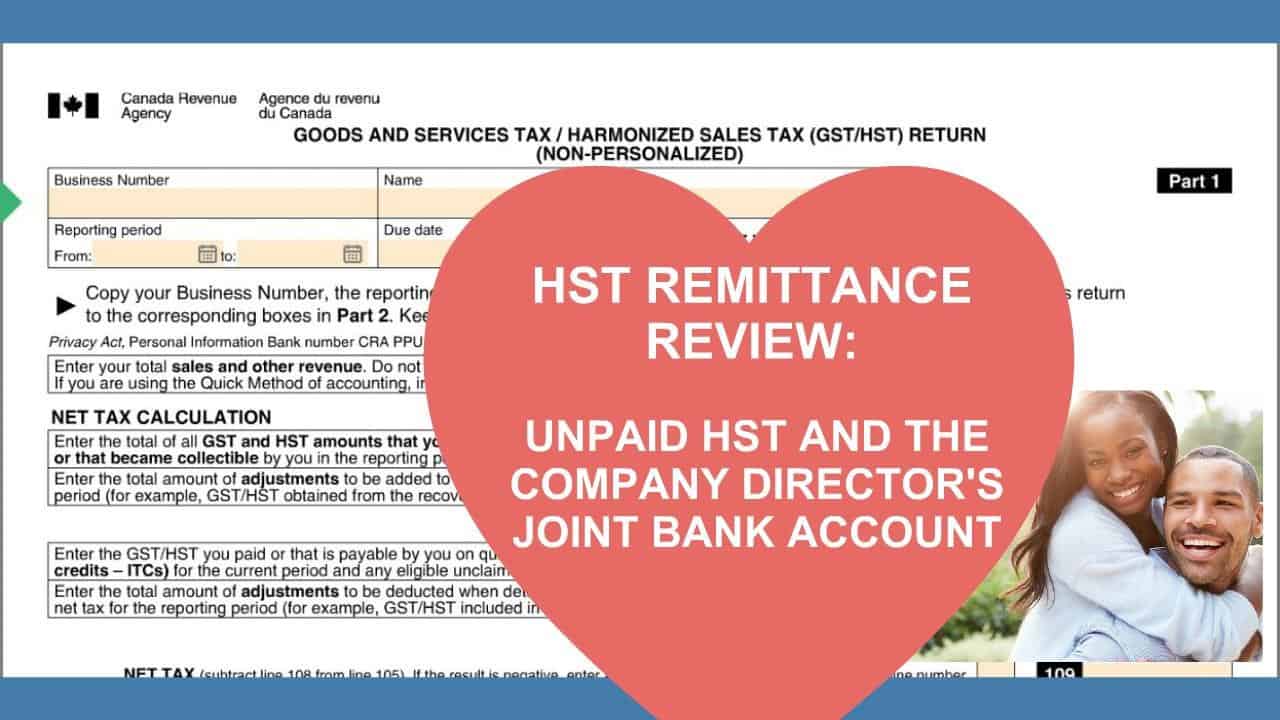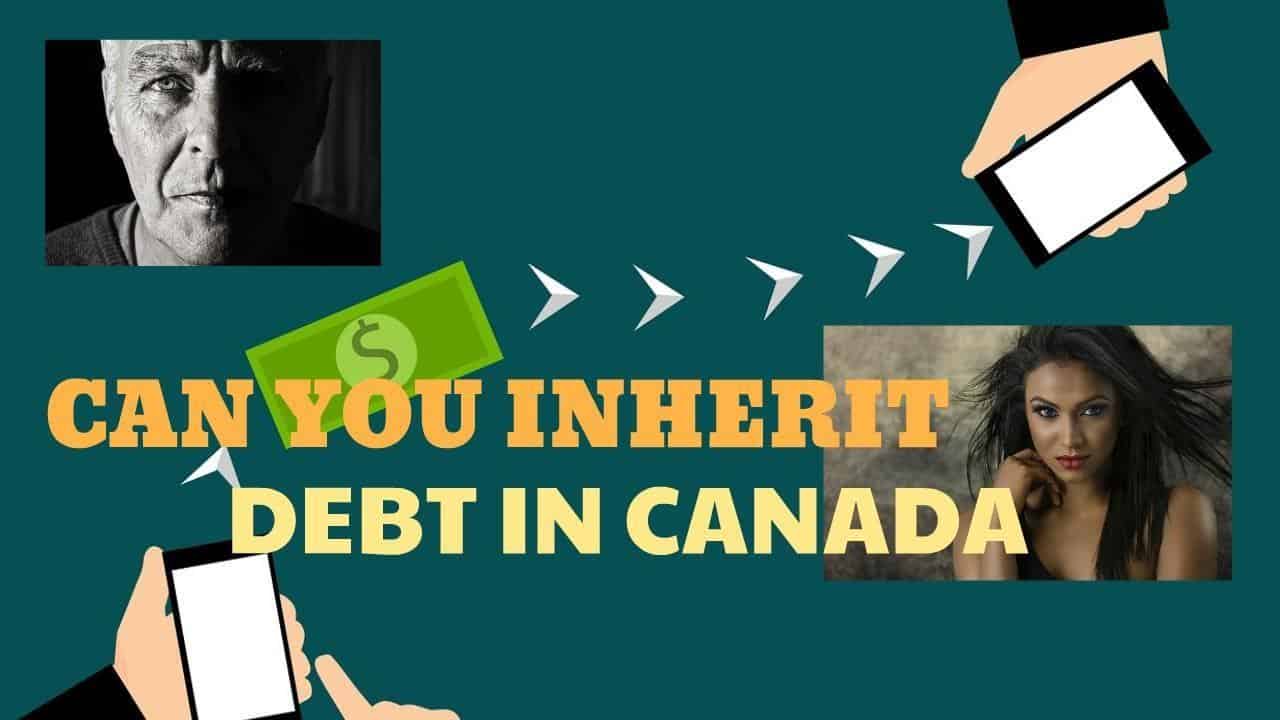The Ira Smith Trustee Team Is Absolutely Operational And Ira, In Addition To Brandon Smith, Is Readily Available For A Telephone Consultation Or Video Meeting.
[monkeytools msnip=”https://monkeyplayr.com/playr.php?u=5173&p=22427″]
When are 2019 taxes due Canada introduction
I have noticed recently that Canadians are searching online the question “when are 2019 taxes due Canada“. That leads me to believe that many people are unclear about the changes this year. Some people are searching because they don’t want to miss the payment deadline. Others may be searching because they want to know when the deadline is that they are going to miss because of the COVID-19 pandemic has hit them right in the wallet or purse.
The purpose of this Brandon’s Blog is to go over for individuals:
- the important tax filing and payment dates for 2019 taxes;
- what needs to happen on those dates and what if you can’t make it on time; and
- ways you can deal with Canada Revenue Agency (CRA) to eliminate your tax debt
I remind you that I and my Firm are not personal or corporate tax advisors. We are licensed insolvency trustees. This Brandon’s Blog is not meant to be income tax advice or to replace professional income tax advice. To learn when are 2019 taxes due Canada for your personal situation, contact your own professional income tax advisor.
Is the Tax Deadline Delayed for 2019 Tax Returns?
You may have wondered how COVID-19 influences the filing of your 2019 tax return, repayment of any income tax owing and your tax obligations generally in terms of deadlines, or payments or refunds and tax credits. Apart from those that are self-employed, the income tax return filing date is usually April 30 of every year.
Identifying the turmoil brought on by COVID-19, the CRA provided most Canadians extra time to submit a 2019 tax return. CRA provided us till June 1, 2020, aside from self-employed people operating as a proprietorship or partnership. For those self-employed people, the filing day remained June 15, 2020, for a 2019 tax return.
So since that due date has passed, nevertheless, this year there might be a technicality as I describe below. The government wants every cent they are owed and they want it in a good time. Thus, there are fines for filing a late income tax return if you have an unpaid tax amount. If you are entitled to a refund or your tax balance is nil, there will be no charges for sending in your return after the deadline date.
Charges for filing your income tax return late when you owe the CRA are levied. The CRA will charge you a late-filing penalty if you file your 2019 income tax return after September 30, 2020 (notwithstanding the actual filing date was June 1), and you owe tax obligation that continues to be unpaid. The fine is 5% of your 2019 tax owing, plus 1% of your income tax owing for each complete month your return was filed after September 30, 2020, to a maximum of twelve months.
So without making you any guarantees, there is a real possibility that if you missed out on the June 1 due date, if you submit and pay on or prior to September 30, 2020, and you do not have any kind of prior years’ late-filing penalty, one may not be levied for 2019.
If the CRA charged a late-filing penalty on your return for 2016, 2017, or 2018 your late-filing fine for 2019 may be 10% of your 2019 balance owing, plus 2% of your 2019 balance owing for each and every complete month your return was submitted after September 30, 2020, to a maximum of 20 months.
So it seems the CRA will forgo arrears interest on 2019 tax obligations related to the specific income tax returns from April 1, 2020, to September 30, 2020. This procedure for your 2019 tax obligation does not terminate penalties and interest on a taxpayer’s account prior to April 1, 2020, to September 30, 2020. It does make it less complicated on a taxpayer’s 2019 tax debt that it will certainly not rise via interest charges throughout this challenging coronavirus pandemic time.
Why file by the June 1 deadline if no payment is due until September 30?
Filing your income tax return on time lessen any negative results on your tax credits and benefits payments. If your 2019 return has actually not been assessed by the CRA, details from your 2018 return will be used to compute benefits as well as credits payments up until September 2020. That will guarantee you continue to obtain vital payments. Nevertheless, without filing your 2019 tax return, you may not be getting exactly the correct amounts you are entitled to.
I doubt you desire any kind of disturbance to benefit payments you get for government programs such as the Canada Child Benefit (CCB) and GST/HST tax credits, as well as amounts from provincial programs that are carried out by the CRA.
By filing a return by the due date, you will lessen this impact. Also, if you are owed a refund, the earlier you file, the earlier it will show up in your pocket. By registering for direct payment, you’ll get your refund quicker.
If you are expecting a tax refund for sure you would certainly want to submit on time. CRA may not chase you for it if you don’t owe them for 2019. Submitting your tax return is the only way to get that refund. Remember, a refund means that you gave too much of your money to CRA during the year. For sure you want it back!
However, registering for a direct deposit could lead to other problems. For more information on that, read my Brandon’s Blog CANADA REVENUE AGENCY LOGIN: MASSIVE CREDENTIAL STUFFING CAUSES MANY PROBLEMS.
When are 2019 taxes due Canada: Are there new deadlines for GST/HST returns and payments as well?
Excellent information for the self-employed as well as entrepreneur small-business owners: while the CRA is not changing the filing target dates for GST/HST returns, it is forgoing late filing charges for returns submitted by the end of June. As for payments, any type of GST/HST installments that are due March 27 through June 2020 can be deferred up until June 30, interest-free.
When are 2019 taxes due Canada: What is the payment date?
The target date to pay amounts owed was initially extended to September 1, 2020. On July 27, the CRA revealed that the payment deadline for a person’s 2019 income tax obligation was additionally extended to September 30, 2020.
There are a few other concerns surrounding the declaring of your 2019 income tax return and the payment of any balance owing that you must understand:
- Some taxpayers may have received a Notification of Assessment that says the date for settlement is April 30, 2020, or September 1, 2020. If you did get such a notice giving those dates for when are 2019 taxes due Canada, it is now incorrect.
- On May 15, it was revealed that qualified Canadians who are currently obtaining the GST/HST credit and/or CCB payments will continue to get them up until the end of September 2020. Benefits starting in July 2020 and those arranged for August and September won’t be disrupted.
- If CRA is unable to evaluate your 2019 return by early September 2020, your estimated benefits and/or credits will certainly stop in October 2020 and you’ll have to repay the approximated amounts that were released to you starting in July 2020.
- By prolonging the due dates for federal returns and instalments, the CRA is additionally expanding the due dates for provincial/territorial individual returns and instalments. Note that the CRA does not administer the tax system for the province of Quebec.
When are 2019 taxes due Canada: What if I owe CRA and cannot pay it?
If you find yourself to be in a financially challenging situation then you need to take proactive activity. The COVID-19 pandemic has hit Canadians hard. I envision there will be many individuals that do not have the needed cash to pay their 2019 income tax debt by September 30. It is necessary to be proactive and positive since the CRA has special powers.
The CRA does have the capacity to take collection procedures without having to go via the court system. The federal government can garnishee your wages or salary, get the money you have on deposit at a bank as well as freeze your bank accounts. They can also make demand on anyone they think owes you money.
There are 4 ways to CRA personal debt relief:
- If you are able to, borrow the money you owe and pay it to CRA on or before September 30. I don’t think this option needs any further explanation.
- Contact a CRA collection officer and make a payment arrangement repayment plan. A payment arrangement is an agreement you make with the CRA. This allows you to agree on a monthly amount to pay that you can afford and then provide CRA with a series of post-dated cheques.
- Consider filing a consumer proposal to consolidate your income tax and other debts so you can make one manageable monthly payment. Through a consumer proposal, you will pay much less than the total of all your debts.
- If you cannot see your way to being able to do any of the three options listed above, the final one is to use personal bankruptcy to eliminate your income tax and other debts.
If you are able to make a settlement arrangement you have to maintain the payment plan by making certain your regular monthly post-dated cheques clear the financial institution every single time. Also, ensure that all your returns are filed promptly. If you fail to do any of these things, they can terminate the payment arrangement and begin collection action to recoup the tax debt.
September 30, the date when are 2019 taxes due Canada is coming up fast. If you know that you will not be able to pay that liability, don’t fret and don’t waste time. Give us a call. We will help you put together the best strategy that meets your overall needs.
When are 2019 taxes due Canada: A consumer proposal
A consumer proposal is a government-regulated debt negotiation program submitted with a Licensed Insolvency Trustee (Trustee). The purpose of submitting one is to eliminate problem financial debts to make sure that you can start the process of resuming life debt-free.
It can just be filed with a Trustee. When you sign your papers, they are filed with the federal government. It is a legal process under the Bankruptcy and Insolvency (Canada) (BIA).
This procedure is a lawful arrangement between you and you’re unsecured creditors to eliminate all of your debt by repaying only a part of the debt that you owe. If a simple majority by dollar amount accept the terms you have offered, then your consumer proposal is binding on all your unsecured creditors.
This court-sanctioned procedure enables you to bargain negotiation with your creditors. When you are carrying out your consumer proposal by making your required payments, you must also file your income tax returns as normal. CRA manages your refunds in the normal course. If you owe tax for any time period after the filing date of your consumer proposal, you additionally pay that amount as regular.
In a consumer proposal, you maintain your assets and as long as you make all the required payments you promised to make, nobody can garnishee your salary or earnings. If you have filed a consumer proposal, personal income tax obligations arising before your filing is an unsecured debt. When you have filed CRA can’t take any type of additional action against you, like wage garnishment, or freezing your bank accounts. As the Trustee, we alert CRA once you file as well as advise it to stop any additional action against you.
For further information on how a consumer proposal could work for you, please get in touch with me. If you know that when are 2019 taxes due Canada you will not be able to pay them, give us a shout so we can help put together a plan of attack for you.
When are 2019 taxes due Canada: Personal bankruptcy in Canada
If none of the above ways can work for you, then you will have to consider personal bankruptcy in Canada. Personal bankruptcy should be considered by anyone who:
- is insolvent;
- has seen a Trustee who has assessed you and determined that you will not be able to complete a consumer proposal; and
- owes more than $1,000.
As soon as you become bankrupt you will be required to surrender most assets to the Trustee, other than those that are exempt under provincial law or are fully encumbered. These assets will then be sold and the money gained from the sale of the properties will be dispersed according to the BIA. You may additionally have to pay a part of your earnings to the Trustee for the benefit of your creditors.
Personal tax obligations can be discharged when you receive your discharge from personal bankruptcy. Many various other financial debts will also be released. If you have liability to CRA from being a director of a company, those financial obligations can also be discharged.
If you have actually declared personal bankruptcy, personal income tax debt is an ordinary unsecured financial debt. As soon as you’ve applied for bankruptcy CRA can’t take any kind of additional action versus you, consisting of a wage garnishment or freezing your accounts. We will inform CRA when you file as well as instruct it to quit any additional activity against you to try to collect their debt.
Your spouse will not be affected by your bankruptcy unless your spouse:
- co-signed a debt;
- owns assets with you jointly; or
- has received a transfer of property from you at a time when you owed CRA money.
A creditor can go after your spouse for payment in these circumstances and also he/she will be called to account and pay.
You may also wish to check out our Top 20 personal bankruptcy FAQs. So if you know now that when are 2019 taxes due Canada you will not be able to pay it, consider giving us a call and we can run through your various options and tailor a plan to fit your unique circumstances.
When are 2019 taxes due Canada: Summary
I hope you found this is Canada when are 2019 taxes due Canada Brandon’s Blog informative. The Ira Smith Team family hopes that you and your family members are remaining secure, healthy, and well-balanced. Our hearts go out to every person that has been affected either via misfortune or inconvenience.
We all must help each other to stop the spread of the coronavirus. Social distancing and self-quarantining are sacrifices that are not optional. Families are literally separated from each other. We look forward to the time when life can return to something near to typical and we can all be together once again.
Ira Smith Trustee & Receiver Inc. has constantly used clean, safe and secure ways in our professional firm and we continue to do so.
Income, revenue, and cash flow shortages are critical issues facing entrepreneurs, their companies, and individual Canadians. This is especially true these days.
If anyone needs our assistance for debt relief Canada COVID-19, or you just need some answers for questions that are bothering you, feel confident that Ira or Brandon can still assist you. Telephone consultations and/or virtual conferences are readily available for anyone feeling the need to discuss their personal or company situation.
The Ira Smith Trustee Team is absolutely operational and Ira, in addition to Brandon Smith, is readily available for a telephone consultation or video meeting.
